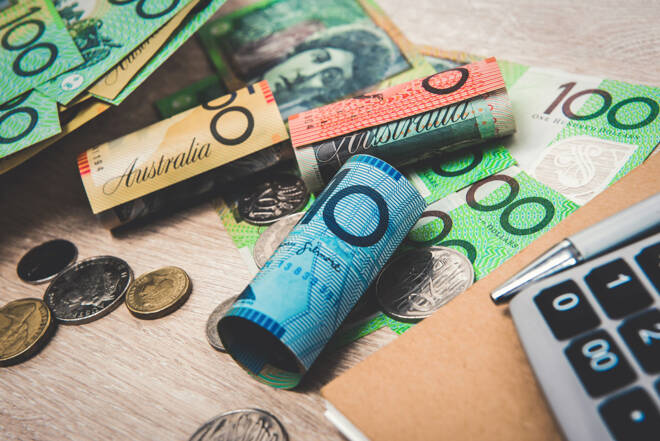Advertisement
Advertisement
AUD to USD Forecast: US Labor Market and Housing Data Set the Stage
By:
Monetary policy divergence favors the Aussie Dollar as bets on a Q1 2024 Fed rate cut rise.
Highlights
- The AUD/USD rose by 0.33% on Wednesday, ending the session at $0.68464.
- On Thursday, US labor market and housing sector data will be focal points later in the session.
- Investors must also consider central bank commentary.
Wednesday Overview of the AUD/USD
The AUD/USD rose by 0.33% on Wednesday. Following a 0.48% gain on Tuesday, the Australian dollar ended the session at $0.68464. The Australian dollar fell to a low of $0.68159 before rising to a high of $0.68515.
Monetary Policy Divergence Tilts Towards the Aussie Dollar
Overnight US economic indicators raised bets on a Q1 2024 Fed rate cut. In contrast, bets on the timing of an RBA rate cut are mixed. During the last RBA monetary policy meeting, the Board considered raising interest rates, supporting an AUD/USD return to the $0.68 handle.
The Commonwealth Bank of Australia expects the RBA to cut interest rates from 4.35% to 3.6% by the end of 2024. Notably, CBA’s chief economist predicts the RBA will begin cutting rates in Q4 2024.
Further Aussie dollar strength will depend on incoming economic indicators and the influence on the RBA. In the RBA meeting minutes, Board members highlighted uncertainty about household spending and the risk of higher wages. An uptrend in wage growth could fuel consumer spending and demand-driven inflationary pressures. The RBA may respond by keeping interest rates higher for longer.
US Labor Market and Housing Sector in the Spotlight
On Thursday, the US labor market and housing sector numbers will garner investor interest. Economists forecast that initial jobless claims will increase from 205k to 210k in the week ending December 23. Pending home sales predictions are also upbeat. Economists expect pending home sales to increase by 1.0% in November.
Tight labor market conditions support wage growth and uptrends in disposable income. The net effect would be an increase in consumer spending, fueling demand-driven inflation. In response, the Fed may delay interest rate hikes to curb spending and dampen inflationary pressures.
Improving housing sector conditions could also fuel spending and force the Fed to reconsider its projected rate path. However, the softer inflation numbers continue to fuel bets on a Q1 2024 Fed rate cut.
According to the CME FedWatch Tool, there is a 74.5% probability of a 25-basis point rate cut in March. On December 26, the chance of a 25-basis point March rate cut was 70.1%. Notably, bets on a January Fed rate cut are rising. The CME shows an 18.6% chance of a Fed rate cut in January, up from 16.5% on December 26.
Short-Term Forecast
Near-term trends for the Aussie dollar will continue to hinge on economic indicators from China and the US economic calendar. Weaker-than-expected US numbers and a steadying Chinese economy would support the AUD/USD return to $0.70.
AUD/USD Price Action
Daily Chart
The AUD/USD sat above the 50-day and 200-day EMAs, with the EMAs affirming bullish price signals.
An AUD/USD break above the $0.68500 handle would support a move to the $0.68944 resistance level.
Market risk sentiment and the US economic calendar will influence demand for the AUD/USD on Thursday.
However, a drop below the $0.68096 support level would give the bears a run at the $0.67286 support level.
A 14-period Daily RSI reading of 71.97 shows the AUD/USD in overbought territory (typically above 70 on the RSI scale). Selling pressure may intensify at the $0.68944 resistance level.
4-Hourly Chart
The AUD/USD remained above the 50-day and 200-day EMAs, reaffirming bullish price signals.
An AUD/USD move through the $0.68500 handle would give the bulls a run at the $0.68944 resistance level.
However, a break below the $0.68096 support level would bring the 50-day EMA and the $0.67286 support level into play.
The 14-period 4-Hourly RSI at 68.96 suggests an AUD/USD return to the $0.68500 handle before entering overbought territory.
About the Author
Bob Masonauthor
With over 28 years of experience in the financial industry, Bob has worked with various global rating agencies and multinational banks. Currently he is covering currencies, commodities, alternative asset classes and global equities, focusing mostly on European and Asian markets.
Did you find this article useful?
Latest news and analysis
Advertisement
